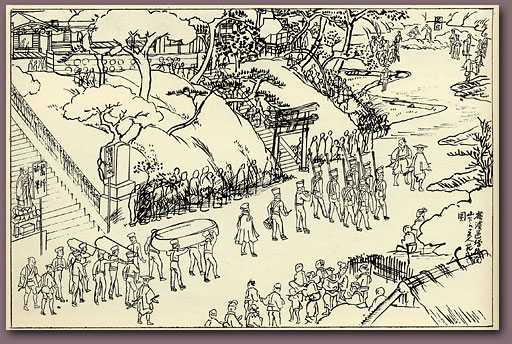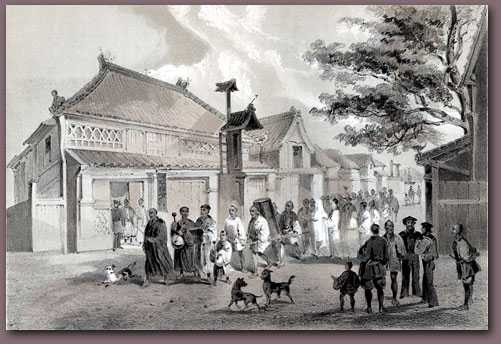
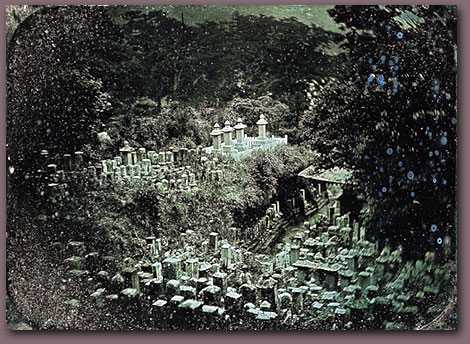
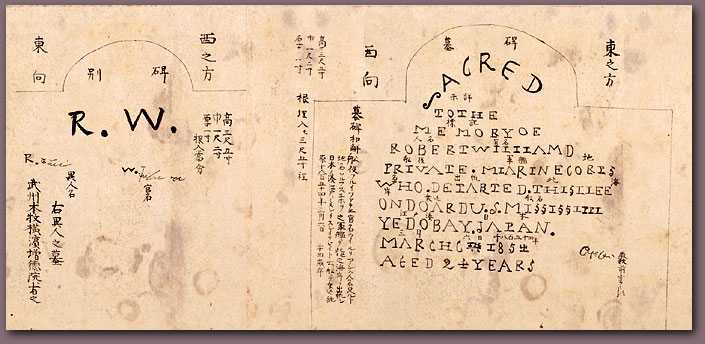
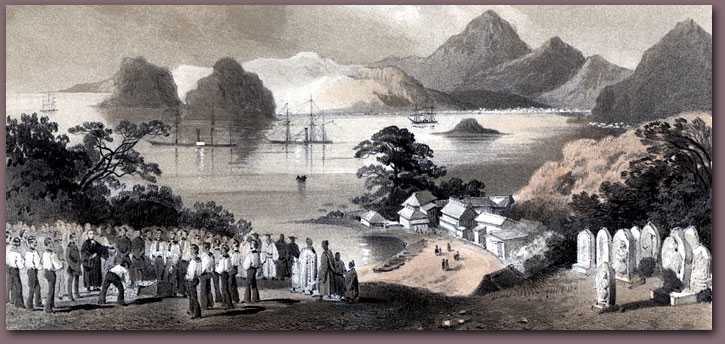
|
|

A lithograph in the Narrative depicting
a Buddhist funeral procession in Shimoda...
...has
a counterpart in a Japanese sketch of the American funeral
procession for marine private
Robert Williams, who died of illness during Perry’s second
visit.
So great was the impression left
by the death of Private Williams that the famous “Black
Ship Scroll” painted in Shimoda in 1854 included a drawing
of the inscription on his tombstone.
In all, four Americans with the
Perry mission died and were buried in Japan. One of
Heine’s most
evocative illustrations depicts Americans
and Japanese at a burial ceremony in a hillside cemetery in Shimoda.
The American fleet is visible at anchor in the harbor.
A rare 1855 daguerreotype captured
the four American graves in Shimoda (still there today). The
photograph—evocative in its own way—highlights the
romanticism of Heine’s vision.


